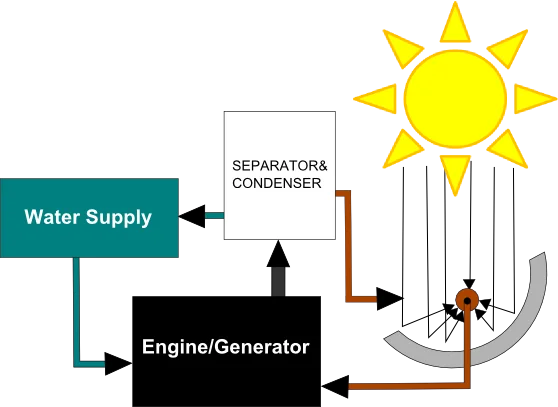Solar Powered Engine
Solar energy is one of the more attractive renewable energy sources that can be used as an input energy source for heat engines. In fact, any heat energy source can be used with the Stirling engine. The solar radiation can be focused onto the displacer hot-end of the Stirling engine, thereby creating a solar-powered prime mover. The direct conversion of solar power into mechanical power reduces both the cost and complexity of the prime mover. In theory, the principal advantages of Stirling engines are their use of an external heat source and their high efficiency. Stirling engines are able to use solar energy that is a cheap source of energy.
General principles
Stirling engines are mechanical devices working theoretically on the Stirling cycle, or its modifications, in which compressible fluids, such as air, hydrogen, helium, nitrogen or even vapors, are used as working fluids. The Stirling engine offers possibility for having high efficiency engine with less exhaust emissions in comparison with the internal combustion engine. The earlier Stirling engines were huge and inefficient. However, over a period of time, a number of new Stirling engine models have been developed to improve the deficiencies.
Solar dish/engine technology
Solar dish/engine systems convert solar energy to mechanical energy and then electrical energy. In order to obtain the required temperature for efficient energy conversion, solar dish/engine systems use a mirror array to track the sun. These systems can be characterized by efficiency, modularity, autonomous operation and the capability to work with either a conventional fuel or solar energy. Among many solar technologies, these systems have been accepted to be the systems with the highest solar-to-electrical conversion efficiency.
High-temperature and high-pressure Stirling engines working with hydrogen or helium are normally used in solar dish/Stirling system engines.




